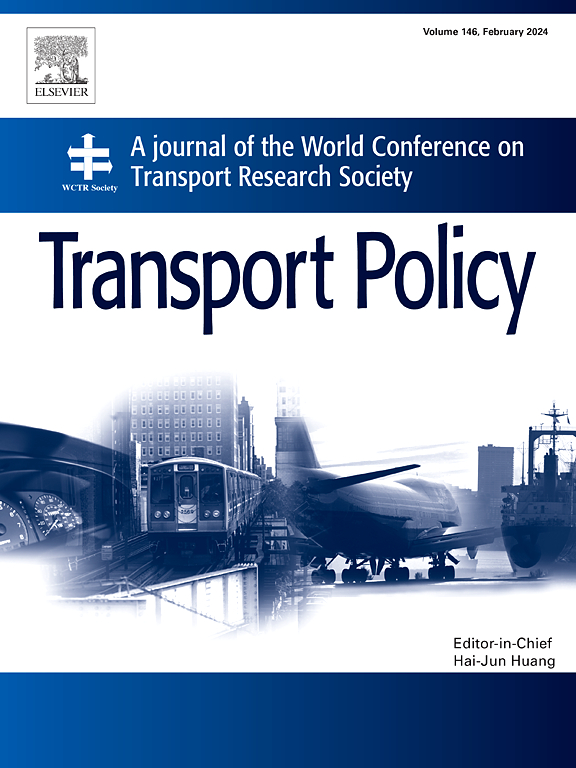Wheels of progress: How high-speed railway is shaping human well-being in China
IF 6.3
2区 工程技术
Q1 ECONOMICS
引用次数: 0
Abstract
The rapid development of high-speed rail (HSR) is regarded as a pivotal catalyst for social and economic advancement. With the aim of assessing its multifaceted effects on human well-being (HWB), this study proposes the novel C4 conceptual framework to comprehensively evaluate the social impacts of HSR projects on HWB. Kernel density estimation (KDE) is employed to examine the spatial distribution and influence scope of the HSR network. A total of 40,000 samples from the Chinese General Social Survey (CGSS) data spanning 2010, 2011, 2012, 2013, and 2015 were utilized in a hierarchical multiple regression model to investigate the impact of HSR on HWB. The findings indicate that (1) The development of HSR has a significant positive effect on individual health and economic well-being, while its environmental impact has transitioned from negative to positive; (2) From a social connection perspective, HSR development has transformed public emotional connection dynamics, decreasing trust in strangers while strengthening ties with relatives and friends; (3) HSR has been found to enhance employability and results in extended working hours, suggesting a potential impact on work-life balance; (4) In its initial stages, HSR construction can contribute to perceived inequities among the population, though such negative effects are alleviated as the network expands and coverage increases.
前进的车轮:高速铁路如何塑造中国的人类福祉
高速铁路(HSR)的快速发展被视为社会和经济发展的关键催化剂。为了评估高铁项目对人类福祉的多方面影响,本研究提出了新的C4概念框架来全面评估高铁项目对人类福祉的社会影响。采用核密度估计(KDE)对高铁网络的空间分布和影响范围进行了分析。本文利用2010年、2011年、2012年、2013年和2015年中国综合社会调查(CGSS)数据中的40000个样本,采用层次多元回归模型研究了高铁对HWB的影响。研究结果表明:(1)高铁发展对个体健康和经济福祉具有显著的正向影响,而对环境的影响则由负向正;(2)从社会联系的角度来看,高铁的发展改变了公众情感联系的动态,降低了对陌生人的信任,加强了与亲朋好友的联系;(3)高铁提高了就业能力,延长了工作时间,对工作与生活的平衡有潜在影响;(4)在初始阶段,高铁建设会导致人们感知到的不平等,但随着网络的扩大和覆盖范围的增加,这种负面影响会得到缓解。
本文章由计算机程序翻译,如有差异,请以英文原文为准。
求助全文
约1分钟内获得全文
求助全文
来源期刊

Transport Policy
Multiple-
CiteScore
12.10
自引率
10.30%
发文量
282
期刊介绍:
Transport Policy is an international journal aimed at bridging the gap between theory and practice in transport. Its subject areas reflect the concerns of policymakers in government, industry, voluntary organisations and the public at large, providing independent, original and rigorous analysis to understand how policy decisions have been taken, monitor their effects, and suggest how they may be improved. The journal treats the transport sector comprehensively, and in the context of other sectors including energy, housing, industry and planning. All modes are covered: land, sea and air; road and rail; public and private; motorised and non-motorised; passenger and freight.
 求助内容:
求助内容: 应助结果提醒方式:
应助结果提醒方式:


